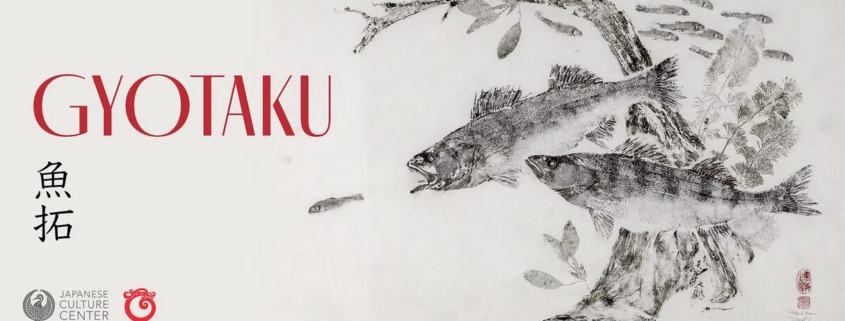
Get Tickets Here
This exhibition presents the work of Gyotaku Master Dwight Hwang, renowned for his dedication to preserving the authenticity and artistry of this traditional practice. The exhibition is organized by Robert Chenoweth in collaboration with the Heritage Museum of Asian Art team and the Japanese Culture Center.
Exhibition on View: Sep. 28 – Oct. 5, Wed.–Sun, 11:00 AM – 5:00 PM
Opening Reception: Sep. 28, 2:00 – 4:00 PM RSVP
Introduction to Gyotaku Workshop: Oct. 4, 2:00 – 4:00 PM Ticket
Gyotaku, which translates to “fish impression,” is a traditional Japanese art form that originated in the mid-19th century during the Edo period. Initially, fishermen developed this technique to create accurate records of their prized catches before the advent of photography. By applying sumi ink directly to the fish’s surface and pressing it onto paper or fabric, they produced life-sized impressions that captured not only the fish’s shape and size but also its unique markings and patterns.
Over time, Gyotaku evolved from a practical method of record-keeping into a respected art form. Artists began exploring composition, color, and a variety of printing surfaces, transforming these scientific imprints into expressive works of art.
Two primary styles emerged:
-
Direct Printing (Chokusetsu-ho) — Ink is applied directly to the fish, and paper or fabric is pressed against it, creating a highly accurate and lifelike image.
-
Indirect Printing (Kansetsu-ho) — A more painterly approach in which paper is laid over the fish and pigment is brushed on, allowing for subtle shading and delicate detail.
Celebrated for its ability to convey the intricate textures, scales, and natural beauty of aquatic life, Gyotaku often preserves a profound moment of connection between the artist and the subject. In modern practice, artists incorporate water-based paints, colored inks, and innovative “inkless” methods to produce vibrant, archival-quality prints while honoring conservation principles.
Today, Gyotaku is embraced worldwide as both a cultural tradition and a contemporary art form. It bridges the worlds of natural history, fine art, and environmental awareness—inviting viewers to appreciate not just the image of the fish, but also the stories, ecosystems, and enduring human connection to the sea.



